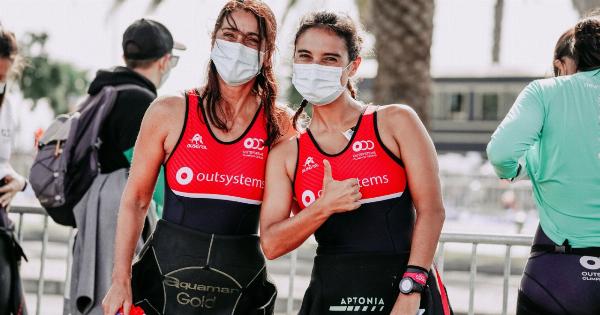Working out while wearing a mask has become a new reality in the wake of the COVID-19 pandemic. While masks serve a vital purpose in minimizing the spread of the virus, they can also create a challenging and uncomfortable environment for exercising.
Specifically, fabric masks can restrict breathing, increase irritation and lead to heat exhaustion, making it more difficult for avid athletes, gym-goers, and fitness enthusiasts alike to reach their goals.
What Does Science Say About Working Out In a Mask?
Research has shown that wearing a mask during physical activity can make it harder to breathe and can lead to a rapid heart rate and increased feelings of fatigue, even in healthy individuals with no underlying health conditions.
This is because during exercise, the body requires more oxygen, which it takes in through deeper and more frequent breaths. During this process, carbon dioxide is given off as a waste gas, which needs to be effectively exhaled.
Wearing a mask can make the inhalation of oxygen and the exhalation of carbon dioxide more difficult, which can lead to feelings of breathlessness, fatigue, and can exacerbate existing respiratory conditions.
The Impact of Fabric Masks on Physical Performance During Exercise
When it comes to fabric masks, the impact on exercise performance can be significant. Fabric masks can restrict airflow, leading to shortness of breath and reducing physical endurance.
This decreased endurance can negatively impact the ability of individuals to achieve their workout goals. Additionally, wearing a mask can increase heat and humidity around the face, leading to discomfort and even heat exhaustion in some cases.
The Importance of Proper Mask Selection and Fit
When it comes to exercising in a mask, the type of mask and how it fits can make a huge difference.
Choosing a mask made from breathable materials such as cotton or a moisture-wicking fabric, can help reduce heat and humidity buildup around the face, making it more comfortable to wear during physical activity. Additionally, selecting a mask with a secure fit can help prevent the mask from slipping during exercise, reducing the need to adjust it frequently.
Strategies for Exercising with a Mask
While exercising with a mask can be difficult, there are some strategies that can help. Below are a few things to keep in mind when working out in a mask:.
: Reduce the Intensity of Your Workout
One option is to decrease the intensity of your workout. By reducing the intensity, the body requires less oxygen, and breathing becomes easier. This can help you to continue working out while wearing a mask.
Additionally, you can increase the duration of your exercise to make up for the decrease in intensity.
: Take Breaks as Needed
If you feel out of breath or uncomfortable, take a break to remove your mask or step away from your workout for a few minutes. This can help you catch your breath and reduce the impact of the mask on your physical ability.
Additionally, make sure to drink plenty of water to reduce the risk of dehydration and heat exhaustion.
: Try Different Types of Masks
If you find that your current mask is uncomfortable or doesn’t fit well during physical activity, consider trying a different type of mask. Some masks are designed for physical activity and are made from lightweight, breathable materials.
These masks can help reduce the impact of the mask on your physical activity.
: Practice Breathing Techniques
Finally, try practicing breathing techniques that can help improve your oxygen intake and overall exercise performance. This can include deep breathing exercises or focusing on nasal breathing during physical activity.
By focusing on proper breathing techniques, you can reduce the impact of the mask and improve your overall ability to exercise while wearing a mask.
Conclusion
Exercising while wearing a mask can be a challenging and uncomfortable experience. Fabric masks, in particular, can create a restrictive environment that leads to shortness of breath, increased fatigue, and discomfort.
However, with careful mask selection, proper mask fit, and the right breathing techniques, it is possible to work out effectively while wearing a mask. By following these strategies, individuals can continue to achieve their workout goals while still staying safe and protecting others.






























